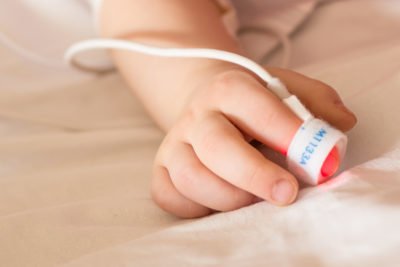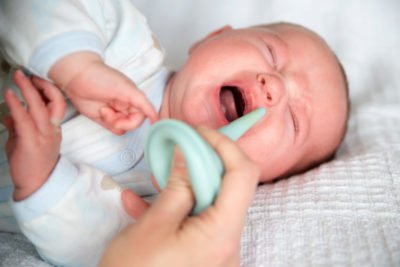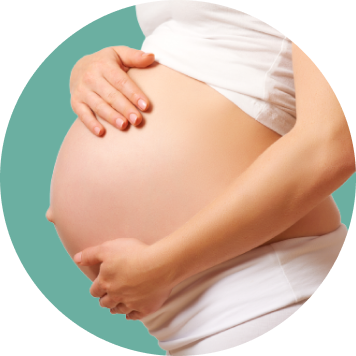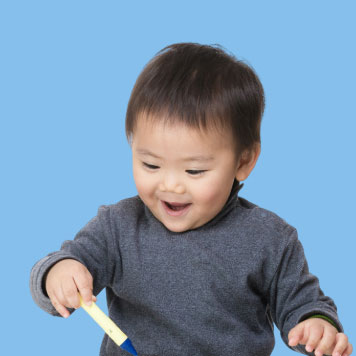Note
This page may contain affiliate links, and I may earn a small commission when you click on them (at no additional cost to you). As an Amazon affiliate, I earn from qualifying purchases. These products were researched and selected with care. However, because things change, make sure to check the safety profiles (and be on the lookout for any recalls) before using them.
Nasal congestion is common in babies and is only a problem if it interferes with feeding, sleep, or breathing.
In This Article, We’ll Discuss:
First, We’ll Talk About the Clues That Doctors Use to Figure Out Whether Your Baby’s Nasal Congestion is Becoming an Issue. These include:
- Trouble Feeding: For example, your baby may be fussy during feeds and may “pop off” (disengage) from the breast or bottle frequently.
- Trouble Sleeping: Your baby may be cranky and keep snorting and waking themselves up. This, in turn, may wake you up and make you cranky.
- Trouble Breathing: This is a red-flag symptom that usually requires a trip to the ER. The problem that parents run into is that it can be hard to tell if a child is actually having trouble breathing or if they’re just having noisy (non-worrisome) breathing.
How Would a Doctor Determine If My Child is Having “Trouble Breathing” Versus Non-Worrisome “Noisy Breathing?”
To Do This, They Would Assess the Following:
1. Your Child’s Respiratory Rate.
Before pulling out their stethoscope, the pediatrician will count your baby’s respiratory rate (i.e. the number of breaths they take in a minute).
- The respiratory rate is calculated by counting the number of times your child’s chest rises and falls within a 30-second timeframe, then multiplying that number by 2.
- Whether your child’s respiratory rate is normal depends on their age. For instance, babies breathe a lot faster than children and adults. To put a number to it, babies normally breathe a whopping 30-60 times per minute, whereas toddlers naturally breathe 22-30 times per minute, school-aged children breathe 16-22 times per minute, and adults breathe only 12-20 times per minute.
A Word About Apnea:
- Newborns tend to have “periodic breathing” which means they take a few breaths and then pause, before they resume breathing. This pause in breathing often freaks parents out, but it’s normal as long as each pause lasts no more than 20 seconds (some experts say 15 seconds). If the pause does last more than 20 seconds, it’s called “apnea,” which isn’t normal. Call 911 if you think your newborn is having an “apneic spell” or if you’re not sure what’s going on.
Insider Info: Apneic spells in babies can be caused by things such as prematurity, head trauma, gastroesophageal reflux, and infections.
2. Your Child’s Work of Breathing.
How “hard” your child is “working” to breathe is another factor that helps doctors determine whether they’re in respiratory distress.
- If your child looks comfy and is just breathing noisily, then they’re probably okay.
- However, if your child is huffing and puffing, and seems “focused” on their breathing (rather than on their toys and surroundings), then immediate care is needed.
- Additional Signs That Suggest Your Child is Working Harder-Than-Normal to Breathe Include:
- Nasal flaring (when the nostrils go in and out).
- Retractions (when the spaces between the ribs get sucked in with each breath).
- Grunting noises at the end of each breath.
- Head bobbing (when your baby’s head is moving up and down with each breath because they’re using their neck muscles to assist with breathing).
- A blue or purple tinge to the lips and skin. Reality Check: This occurs when a baby is in severe respiratory distress.
- Nasal flaring (when the nostrils go in and out).
3. Your Child’s Energy Level.
Breathing hard requires energy and can wear a child out.
PediaTip: If your kiddo starts to look fatigued because they’re working hard to breathe, they need to go to the ER. Why? Because this is a late (and worrisome) sign of respiratory distress.
4. What Your Child Sounds Like.
After quickly observing your child, the doctor will listen to their chest with a stethoscope. Doctors listen for extra noises in the lungs such as wheezing (a sign of asthma) and crackles (a sign of pneumonia). The doctor will also assess how well your child is “moving air” in and out of their lungs.
Double Take: Wheezing can usually be heard only with a stethoscope. Parents often think the whistling sound they hear as air passes through the snot in their baby’s nose is wheezing. Nope, it’s just nose whistling. For true wheezing to be audible to the naked ear, a child would have to be in severe (and obvious) respiratory distress.
5. How Much Oxygen is in Your Child’s Blood.
If your baby is having trouble breathing, the doctor will probably put a “pulse oximeter” on their finger (or big toe) to measure their “oxygen saturation” (i.e. the level of oxygen in their blood). This can be done in the doctor’s office or in the hospital.
The Pulse Oximeter Looks Like This:

A normal oxygen saturation value is between 95-100%. Lower numbers suggest that something (such as an infection) is preventing adequate amounts of oxygen from getting into the child’s blood.
Key Take-Away Points About Respiratory Distress:
- Noisy breathing is not the same thing as having trouble breathing. Nasal congestion can make your child sound like Darth Vader, but it doesn’t necessarily mean their breathing is labored.
- If your baby is in respiratory distress, they will look uncomfortable and stressed out. Call the doctor if you see this or if you’re not sure what’s going on.
- Children particularly at risk for respiratory distress include kids who tend to wheeze with colds (think: kids with asthma or “reactive airway disease”) and kids with an underlying lung condition (such as chronic lung disease, which is seen in children who were born prematurely).
Insider Info: Asthma isn’t formally diagnosed until a child can do asthma testing in the form of “spirometry.” Spirometry requires some coordination on the child’s part and isn’t generally done until age 5. “Reactive airway disease” is the term used for asthma-like symptoms before age 5. Not all kids with reactive airway disease go on to develop asthma.
Common Question: What Could Be Causing My Child’s Nasal Congestion?

Nasal congestion is typically caused by a viral infection (think: a cold). One virus that doctors are particularly on the lookout for in young kids is the respiratory syncytial virus (RSV). This virus is particularly nasty and leads to a stuffy nose and “bronchiolitis” (inflammation of the tiny airways leading to the lungs).
The Good News: There’s a quick way to test for RSV in the office.
Get Wise(r) about RSV and bronchiolitis, including how docs manage it and try to prevent it.
What Can I Do About My Baby’s Nasal Congestion?
The first step is to the call the doctor if your baby is having trouble feeding, sleeping, or breathing because of their nasal congestion. If the congestion is MILD, though, and is merely a nuisance, then you can try the following at home:
- Run a Cool-Mist Humidifier in the Room While Your Baby is Sleeping: Cool-mist humidifiers help keep the skin lining the nasal passages moist and the mucus loose.
PediaTips:- Be sure to clean the humidifier daily (see the manufacturer’s manual) to prevent mold and bacteria from growing in the machine.
- Avoid hot-water vaporizers. Why? Because they can cause burns.
- “Pace” Your Baby’s Feeds and Hold Your Little One Upright: Congested babies have to work extra hard to get oxygen through their noses while feeding. To reduce your baby’s workload, slow down their feeds and provide regular breaks. It helps to hold your baby in a more upright position, too.
- Try Saline Nose Drops: Saline nose drops are your friend when it comes to nasal congestion. Although they sound kinda fancy, they’re basically just sterile saltwater. Squirt 2-3 drops into each of your baby’s nostrils (ideally 15-20 minutes before feeds and bedtime). The salt in the drops will help dry up the mucus.
PediaPick: Little Remedies Saline Spray and Drops.
PediaTip #1: Make sure to get the non-medicated (“drug-free”) version of the saline nose drops (as shown in the PediaPick above). You can also make your own normal saline at home by mixing ½ teaspoon of non-iodized salt in 8 ounces of distilled or boiled water.
PediaTip #2: Have your baby spend some time on their belly after you administer the saline nose drops. This will help the loosened-up mucus drain out of their nostrils.
A Word About Bulb Syringes
In the Past, Almost All Pediatricians Recommended Using a Bulb Syringe (in Conjunction With the Saline Nose Drops) to Suck the Snot of Their Patients’ Noses. A Bulb Syringe Looks Like This:

This Practice Has Fallen Out of Favor in Some Circles, Though, Because:
1. Babies hate it (as confirmed by the pic above).
2. Certain doctors believe it causes “rebound” nasal congestion (meaning that it irritates the nasal passages and causes more nasal congestion in the long run).
If You DO Decide to Use a Bulb Syringe, Put the Saline Drops in the Nose First, Then Suck the Snot Out With the Bulb Syringe. To Use the Bulb Syringe, Do the Following:
1. Squeeze the bulb (as in the pic above).
2. Gently insert the pointy end into your baby’s nostril.
3. Slowly release the bulb.
Insider Info: “Nasal aspirators,” like the popular NoseFrida, are an alternative to the bulb syringe. To use a nasal aspirator, put one end of the plastic tube up your baby’s nose and suck on the other end. Don’t worry, the snot won’t go in your mouth!
The Bottom Line
Nasal congestion is a common complaint in babies. Fortunately, most nasal congestion is due to a mild cold and doesn’t become a problem. Look out for the red flags above, though, and always call the doctor if your baby’s nasal congestion seems to be noticeably interfering with their sleep, breathing, and/or eating.








